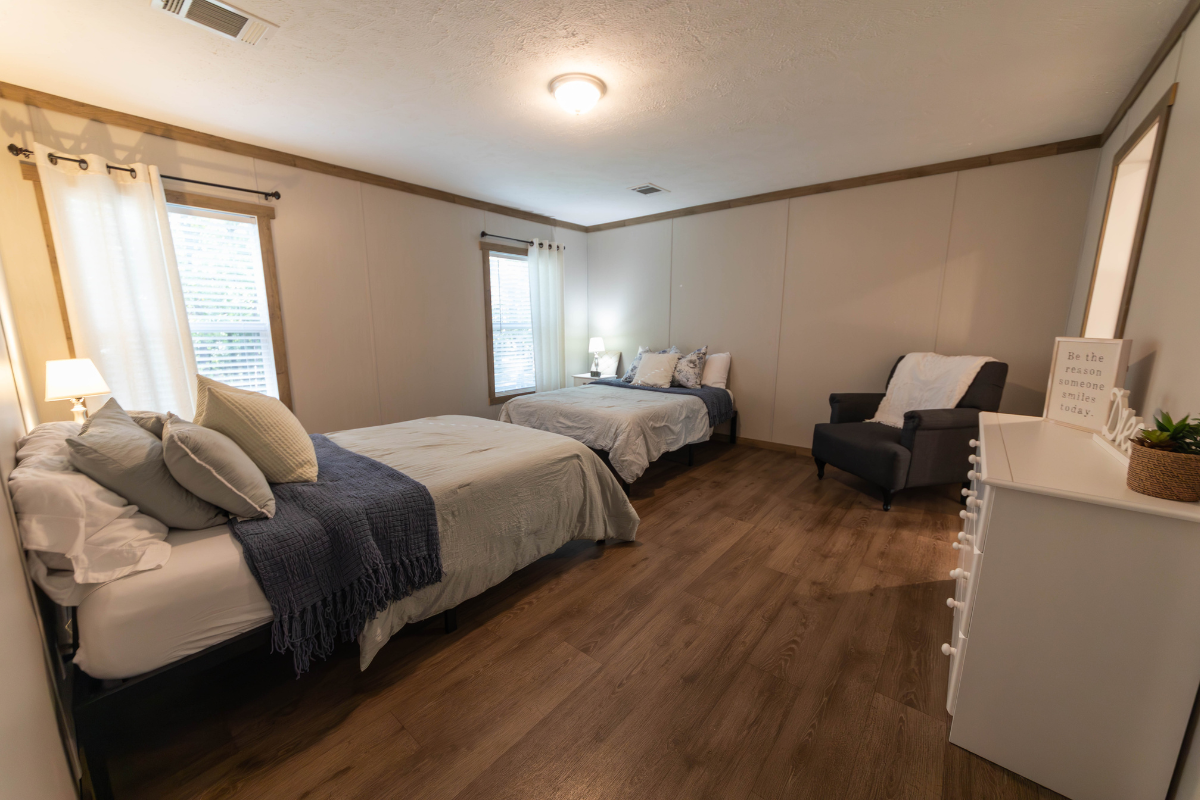For many students, college represents a time of new beginnings — fresh independence, academic challenges, exciting social connections, and the promise of personal and intellectual growth. But for those living with or vulnerable to an eating disorder, this time can also feel uncertain and overwhelming. The structure, social expectations, and stress of college life can quietly intensify symptoms or trigger new patterns of disordered eating.
Clinicians who work in residential treatment and partial hospitalization programs — like those at Magnolia Creek Treatment Center for Eating Disorders in Alabama — often see this intersection firsthand: students striving for success while silently battling deep, overwhelming anxiety around food, body image, or control. Understanding how to navigate college with an eating disorder — whether you’re in recovery, relapse, or early awareness — is not about perfection. It’s about learning to build support, structure, and compassion into a world that often demands the opposite.
Why Eating Disorders Often Emerge During College
The college years fall squarely within the age range when eating disorders most commonly begin. Studies show the median age of onset is around 18 to 21 years old.¹ For many, this period coincides with leaving home, managing food choices independently for the first time, and coping with intense academic and social pressures.
The culture of college life often amplifies concerns about appearance and health, including fitness, fashion, and diet trends, social media comparisons, and changes in eating patterns related to alcohol consumption. Add in sleep deprivation, homesickness, and financial or academic stress, and the result can be a perfect storm for disordered eating.²
These numbers highlight something important: eating disorders in college students are not rare, nor are they a niche concern. They’re a significant and growing public health issue that deserves compassionate attention.
Before the COVID-19 pandemic, roughly 38% of undergraduates screened positive for disordered eating. That number rose to nearly 50% during the pandemic.³ Other reviews estimate that 11–17% of college women and about 4% of college men meet clinical criteria for an eating disorder.⁴
The Academic + Emotional Toll of Eating Disorders
Eating disorders affect far more than food intake or weight. They shape how a student thinks, feels, and connects with others. When untreated, symptoms can disrupt concentration, reduce academic performance, and interfere with social or emotional development. A cohort study found that disordered eating is associated with lower educational attainment among college students.⁵
Students often describe their minds as consumed by calculations — meals, calories, exercise, comparison. That mental noise makes it difficult to absorb lectures, write papers, or even attend class. Physical consequences, such as fatigue, dizziness, and digestive distress, further deplete energy and motivation.
However, college can also offer opportunities for personal growth and healing. Structured schedules, supportive peers, on-campus counseling, and accessible health services can help anchor recovery when students know where to turn for support.
Core Elements of Navigating College with an Eating Disorder
Recognizing early warning signs
Awareness is key. Behaviors such as skipping meals, avoiding the dining hall, fixating on calories or macros, or engaging in excessive exercise can all signal that something deeper is at play. Research shows that students with subthreshold eating disorders who also experience high levels of stress or depressive symptoms are more likely to see those behaviors worsen without intervention.⁶
Maintaining structure + nourishment
Consistency can be a stabilizing force. Eating at regular intervals — even on busy days — helps prevent both physical and emotional distress. Some students benefit from scheduling meals around classes, using meal plans intentionally, or keeping balanced snacks readily available.
Building a professional + personal support system
Recovery doesn’t happen in isolation. Staying connected with a therapist, dietitian, or campus counselor who is trained in treating eating disorders can make a significant difference. Supportive peers and loved ones can reinforce healthy choices and provide accountability when stress or triggers arise.
Communicating with campus resources
Most colleges offer disability services, student health programs, or academic accommodations. Reaching out early allows for individualized support. Adjusted course loads, dining hall accommodations, or flexible housing arrangements can all make recovery more sustainable.
Managing stress, social pressure, + unstructured time
Without the structure that high school or professional treatment provides, college can feel disorienting. Establishing daily routines around sleep, meals, and breaks helps protect against relapse. Mindfulness, gentle movement, or creative expression can also serve as meaningful outlets.
Planning ahead for relapse prevention
Recovery is rarely linear. Students who create a plan for setbacks — knowing who to call, how to communicate their struggles, and what supports to access — are better prepared when challenges arise.
Practicing self-advocacy
Asking for help, setting boundaries, or requesting accommodations takes courage. However, each act of self-advocacy builds confidence and reinforces the idea that recovery deserves priority, even in the fast-paced college world.
For Parents + Loved Ones
Families often feel torn between wanting to help and respecting a student’s growing independence. Their support remains essential. Gentle, non-judgmental conversations about well-being — such as sleep, eating habits, and stress — can foster open and honest communication. Asking questions like, “How are you feeling about food on campus?” or “Who do you turn to when you’re struggling?” invites dialogue without pressure.
Practical gestures matter, too — sending care packages, checking in during breaks, or helping their loved one navigate insurance and treatment options. The goal is not to control, but to stay connected, informed, and compassionate.
Common College Challenges + How to Cope
Dining halls – For students in recovery, large, unstructured dining spaces can trigger anxiety. Visiting the dining hall with a support person, identifying reliable meal options, or arranging for smaller meal settings can help.
Late-night eating + social events – Parties and study sessions often revolve around food and drinks. Planning ahead with safe snacks or exit strategies can help reduce overwhelm.
Exercise + athletics – Many students use exercise to cope with stress, but over-exercise can easily slip into disordered behavior. Working with a therapist or sports dietitian ensures activity remains balanced and health-focused.
Roommates + privacy – Living with others can bring new challenges — especially surrounding food or body image. Open conversations about needs and boundaries can create a safer environment.
Academic stress – Time management and perfectionism often worsen eating disorder symptoms. Using campus tutoring, study groups, and counseling can help regulate stress before it fuels unhealthy coping patterns.
Seeking Treatment + Support Beyond Campus
While many colleges and universities offer counseling, few provide the specialized care needed for moderate to severe eating disorders. Studies show that fewer than 20% of college students who screen positive for an eating disorder actually receive treatment.⁴
For those requiring more structured care, programs that integrate medical, nutritional, and psychological support — such as residential treatment or partial hospitalization programs — are essential. These professional treatment settings, like those at Magnolia Creek, often collaborate directly with schools to support academic reintegration and relapse prevention.
Hear how Magnolia Creek helps our clients navigate academics and treatment simultaneously.
Early intervention consistently improves outcomes.⁶ Reaching out for help is not a sign of failure — it’s a sign of commitment to both education and health.
Finding Balance, Strength, + Support in Recovery
College is a chapter filled with growth, challenge, and self-discovery — and for students navigating an eating disorder, it can also be a time of remarkable resilience. Recovery in this season isn’t about stepping away from campus life. It’s about learning to engage in it with intention, nourishment, and self-compassion.
Healing during college is not only possible — it’s deeply worthwhile. With consistent support and the proper treatment, students can build the skills to thrive academically, emotionally, and socially. And for the families, friends, and campus communities walking beside them, every act of understanding and encouragement helps recovery take root.
Specialized eating disorder treatment at Magnolia Creek
If you or someone you care about is struggling to balance recovery with the demands of college life, Magnolia Creek in Columbiana, Alabama, offers specialized, evidence-based treatment in a peaceful, restorative setting. Our multidisciplinary team helps young adults build a foundation of stability and resilience, combining clinical expertise with compassionate care designed to meet each individual’s needs.
Take the next step toward healing. Contact Magnolia Creek today to learn more about our eating disorder treatment programs and how we help students and families find balance, recovery, and lasting hope.
References
- Miyake, Y., Okamoto, Y., Takagaki, K., & Yoshihara, M. (2023). Changes in eating attitudes and risk for developing disordered eating behaviors in college students with subthreshold eating disorders: A cohort study. Psychopathology, 56(4), 276–284. https://doi.org/10.1159/000527604
- Child Mind Institute. (2025, July 9). Eating disorders in college students.
- Pacanowski, C. R., Skubisz, C., Borton, D., & Ryding, R. (2024). Prevalence and correlates of disordered eating at a large state university before and after the onset of the COVID-19 pandemic. Journal of Eating Disorders, 12, Article 153.
- Grammer, A. C., Fitzsimmons-Craft, E. E., Laing, O., De Pietro, B., & Wilfley, D. E. (2020). Eating disorders on college campuses in the United States: Current insight on screening, prevention, and treatment. Current Psychopharmacology, 9(2), 91-102.
- Claydon, E., et al. (2018). Eating disorders and academic performance among college students. [Unpublished manuscript].
- Budhiwianto, S., Bennett, C. J., Bristow, C. A., & Dart, J. (2023). Global prevalence of eating disorders in nutrition and dietetic university students: A systematic scoping review. Nutrients, 15, 2317.














































